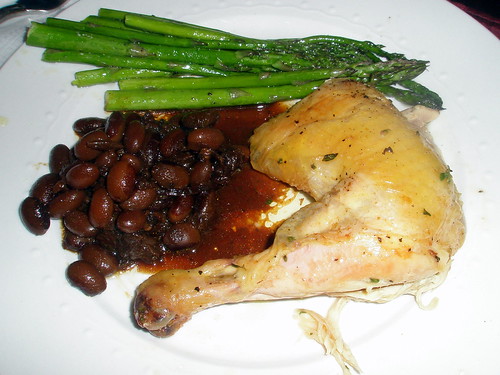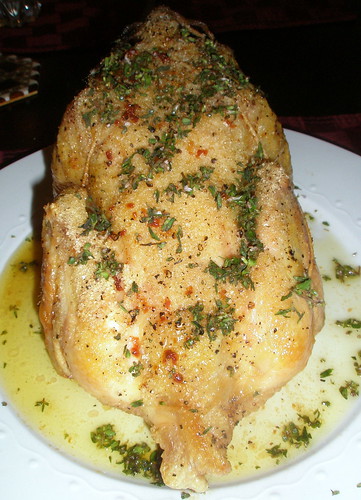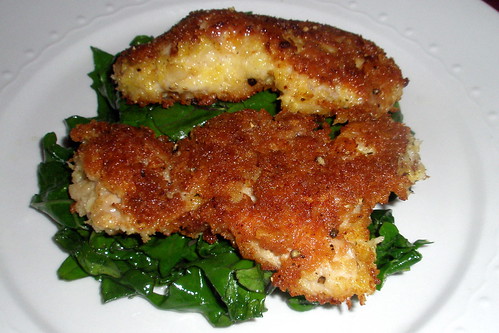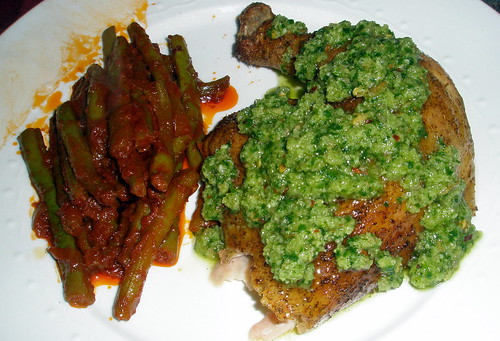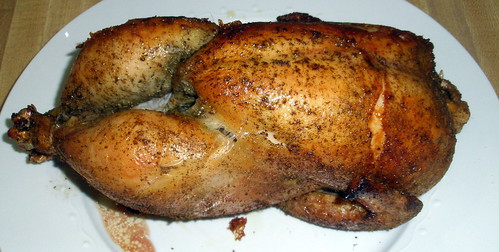How well can you tackle a classic dish from another culture? We're bypassing the French and Italian standards in favor of more challenging cuisines.
The competition for this challenge will be even tougher, so it's all the more important that everyone vote for their favorite posts. Voting will commence at 9am EST on September 27. You can vote for this post via my contestant profile. Thanks in advance for your votes!
For the second challenge, I decided to make a traditional Thai red curry, not only because of the challenge the dish would present, but also because I had at least one major doubter in my ability to pull it off. Those of you who regularly follow this blog are probably aware that the Significant Eater is of Laotian heritage. Although she loves and reaps the benefits of much of my cooking, she is skeptical any time I try to cook the Southeast Asian cuisine that she grew up eating. Although I have been successful in past efforts--Significant Eater had been particularly impressed with the authenticity of my larb--, pounding out a curry paste from scratch and making a great curry would at last calm her fears of seeing me in the kitchen with fish sauce and shrimp paste in hand.
My mission began in Chinatown at Bangkok Center Grocery, the best place in Manhattan to purchase Thai ingredients. The friendly store clerk, who no doubt had the same misgivings as the Significant Eater when I told him I was making red curry, helped me find many of the ingredients that I would need to prepare the dish: galangal, lemongrass, coriander seed, white Kaffir limes and lime leaves, shrimp paste, bird's eye chilies, Thai basil, palm sugar, and coconut milk. Unfortunately, the store had sold out of fresh coriander root, so I decided to double the amount of coriander seeds in the recipe and hope for the best (thankfully, it worked out).
Most importantly, I also purchased a beautiful granite mortar and pestle that would help me pound out a perfectly textured curry paste. I picked up the vegetables I would need for the curry, long beans and Asian eggplant, from another Chinatown grocer, and was on my way home to start cooking.
The most challenging part of making a curry is preparing the curry paste. Although it can be easily blended in a food processor, using a mortar and pestle will give the curry paste a better texture, and is also a much more Project Food Blog-worthy method.
The first step is to toast the spices (coriander, white peppercorns, and cumin seeds) in a dry skillet. I toasted them until they were fragrant and beginning to crackle. Once toasted, I tossed them into the mortar and pestle and began pounding away.
The Significant Eater chided me for my apparently weak mortar and pestle skills, letting me know that her 90-year-old grandmother not only makes curry paste faster than I, but also does so using a pestle that is twice as large as mine. Once I got over my pestle envy, I rolled up my sleeves and began pounding away at the spices with more aggression.
Once the spices were ground to a fine powder, I set them aside and placed the shallots, garlic, soaked dry chilies, salt, galangal, lemongrass, and Kaffir lime rind in the mortar and once again began pounding them with the pestle. To say this step was labor-intensive is an understatement; it took over fifteen minutes, with a few breaks in between, before I was able to pound out all of the chunks in the paste.
Finally, I added the ground spices and the extremely pungent shrimp paste to the mortar and mixed the paste together. With a sore arm, I had finally completed the curry paste. One thing is for sure: if I make curry paste a few times a week, I will no longer need to pay for a gym membership.
And another thing that's for sure is that curry paste sure ain't the prettiest.
Fortunately, once I had prepared the curry paste, the rest of the curry was fairly easy to make. First, I fried some of the paste in a bit of peanut oil until it was fragrant. Then, I tossed in the chicken and stir fried it until it was cooked through. Once done, I added in about half a can of coconut milk along with the long beans and chopped Kaffir lime leaves, and let it all simmer away for several minutes. I then added the fish sauce, palm sugar, and eggplant and kept everything simmering until the eggplant was soft. Finally, I tossed in the Thai basil. The curry was ready!
I was a bit concerned that the curry was not as red in color as I expected it to be, but it certainly smelled and tasted like a Thai curry. Of course, the only opinion that mattered was that of the Significant Eater herself. I watched her with great trepidation as she spooned a small amount of the curry onto her plate and took her first bite. Silently, she then proceeded to scoop out several more spoonfuls onto her plate. Finally, she exclaimed, "Perfect!"
I have a feeling that she'll be allowing me to cook with my fish sauce and shrimp paste more frequently from now on.
Red Curry Chicken ("gang phet" in Lao)
Serves 4
For the curry paste:
- 1 tsp cumin seed
- 1 tbsp coriander seed (use another teaspoon if not using coriander root)
- 1 tsp white peppercorns
- 5 dried Thai chilies, seeded and soaked in warm water
- 1 tsp salt
- 5 small shallots, thinly sliced
- 10 garlic cloves, peeled
- 1 tsp galangal, thinly sliced
- 1 tbsp lemongrass, thinly sliced
- 1 tbsp Kaffir lime rind, thinly sliced (discard the green peel and use the white pith)
- 2 tsp coriander root, finely chopped
- 1 tsp shrimp paste
- Toast the cumin, coriander seeds, and peppercorns in a dry skillet over medium heat until they are fragrant and begin to pop. Place them in a mortar and pound them with a pestle until they are finely ground. Remove the spices from the mortar and set them aside.
- Add the dried chilies and salt to the mortar. Pound the chilies to a paste.
- Add the shallots, garlic, galangal, lemongrass, lime rind, and coriander root to the mortar. Pound the ingredients with the pestle until they form a paste.
- Return the ground spice to the mortar along with the shrimp paste and use the pestle to mix the paste together.
- Set three tablespoons of the curry paste aside for the curry. The remaining paste can be frozen for up to 6 months.
- 2 tbsp peanut oil
- 3 tbsp curry paste
- 1 lb. boneless, skinless chicken thighs, cut into bite-size pieces
- 1 1/2 cups Chinese long beans, chopped into 1-inch pieces
- 1/2 of a 13.5 oz. can of coconut milk
- 1 1/2 tsp palm sugar
- 2 tbsp fish sauce
- 1 Asian eggplant, sliced into half-moon-shaped pieces
- 2 fresh Thai chilies, thinly sliced
- 1/2 cup fresh Thai basil leaves
- Heat the peanut oil in a large saute pan with high sides over medium-high heat.
- Add the curry paste to the pan and cook, stirring constantly, until the paste is extremely fragrant, 3 to 5 minutes.
- Add the chicken to the pan and increase the heat to high. Cook, stirring constantly, until the chicken is nearly cooked through, 3 to 5 minutes.
- Reduce the heat to medium and add the coconut milk, long beans, and lime leaves to the pan. Bring the coconut milk to a simmer, stirring frequently, until it thickens slightly, about 5 minutes.
- Add the palm sugar, fish sauce, chilies, and eggplant to the pan. Continue to simmer the curry until the eggplant is cooked through, about about 3 minutes.
- Taste the curry for seasoning. If it needs salt, add a small amount of fish sauce. If it is not sweet enough, add a small amount of palm sugar. If it is not hot enough, add additional chilies.
- Add the basil leaves to the curry and serve it with steamed Jasmine rice.
















